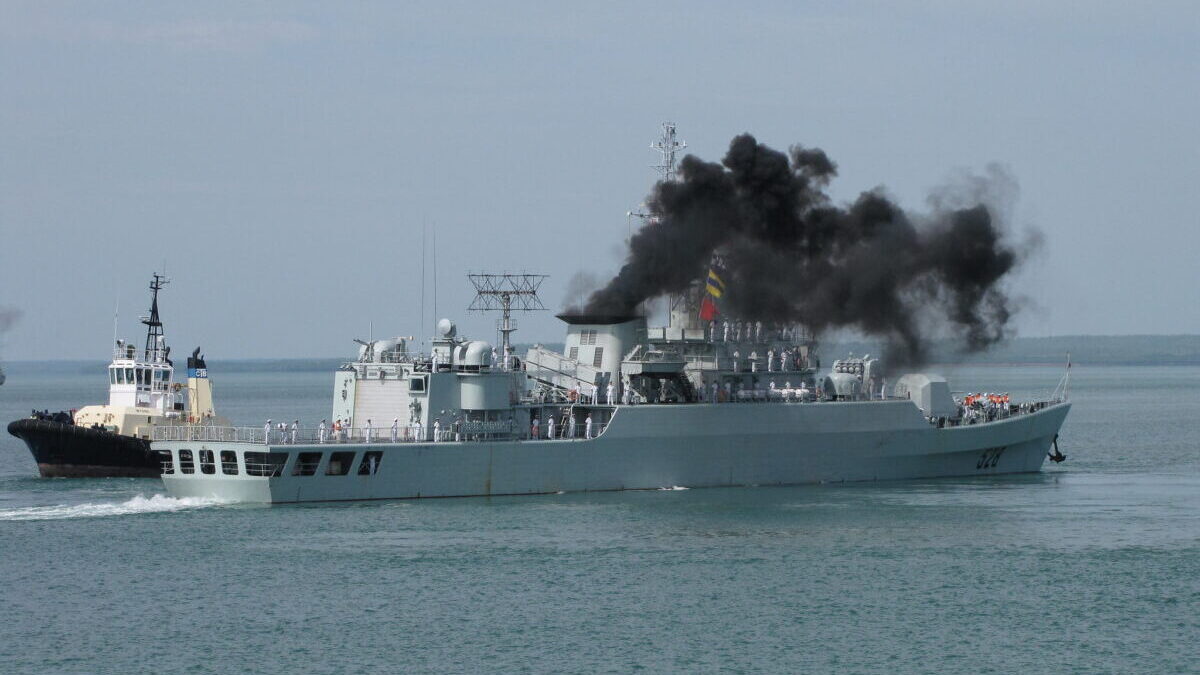The U.S. Navy has issued an instructional video training its members to create a “safe space” by using “correct” pronouns. The video emphasized how service members must use “inclusive languages” and not “misgender” others.
For example, “Instead of saying something like ‘Hey, guys,’ you can say, ‘Hey, everyone,’ or ‘Hey, team.’” The video warned not to pressure others to disclose their pronouns because “some people may be going through the process of discovery.”
The video also offered a tip for memorizing someone’s pronouns by “going through a progression of three good things about the person using their pronouns … i.e. ‘They have a nice shirt. They have a nice smile. They are really smart.’”
This cringe-worthy video was reportedly modeled after a children’s show, which explains why the two hosts acted as if they were talking to kindergartners, even though their intended audience is full-grown adults. The video was part of the Biden administration’s and Pentagon top brass’s push to make the U.S. military a welcoming place for transgender service members. The U.S. Army offers similar gender identity training and coaches officers on when to provide soldiers with gender transition surgery.
Imposing Politicized Lies While The World Burns
These mandatory trainings occur at a time the U.S.-led liberal world order, which has guaranteed peace and prosperity for seven decades post World War II, faces grave threats from adversaries such as Russia and China.
The Russia-Ukraine war has been going on for almost four months. It has resulted in the loss of lives, millions of refugees, rising energy prices, worldwide food inflation, and food shortages. Sen. Marco Rubio warned, “Putin’s invasion of Ukraine is not the first time an authoritarian regime invaded its neighbor and, unfortunately, it won’t be the last.” He’s right, because China is currently planning a war over Taiwan. Between Russia and China, China presents a much more serious military challenge to the United States.
Take the Chinese Navy as an example. China has tripled its naval battle force within two decades and built the world’s largest navy, measured by the number of battle force ships. According to CNN, “Between 2014 and 2018, China launched more submarines, warships, amphibious vessels, and auxiliaries than the number of ships currently serving in the individual navies of Germany, India, Spain, and the United Kingdom.”
China today has 355 battle-force ships and continues to build more. Early this week, China launched its third and largest aircraft carrier, domestically designed and built. In a provocative move, China named its new aircraft “Fujian,” the coastal province closest to Taiwan. Experts project that the Chinese Navy will have 460 battle force ships by 2030.
In addition to building ships, China has also expanded its overseas military base. The People’s Liberation Army (PLA) already has a base in Djibouti, an East African nation. Early this year, China and the Solomon Islands signed a security pact, which many people suspect would grant the Chinese Navy a permanent base in the South Pacific. Last week, The Washington Post reported that China is building a naval facility in Cambodia for its exclusive use “and taking extraordinary measures to conceal the operation.” The PLA is also rumored to be actively looking for a base in West Africa or the Middle East.
Depleted U.S. Navy Wastes Time on False Pronouns
While China is expanding its navy capacity and footprints, the U.S. Navy has been going in the opposite direction. The number of U.S. Navy battle-force ships has shrunk from 318 in 2000 to 296 in 2021. In addition to a smaller fleet size, many ships are reaching their expiration date without replacements. The shrinking fleet size and aging naval assets have already affected the U.S. Navy’s ability to maintain its peacetime commitment worldwide.
Last summer, the U.S. Navy reportedly had to “divert its only Pacific aircraft carrier to deal with the withdrawal from Afghanistan.” Some also pointed out that the U.S. Navy had spent less time patrolling the Black Sea in recent years, which might have inadvertently emboldened Putin to take action on Ukraine.
Jim Townsend, a fellow at the Center for a New American Security think tank in Washington, D.C., said, “so much of deterrence and dealing with other nations geopolitically has do with presence… If you’re not there one way or another, then the assumption is you don’t care about it.” Even though some experts believe the U.S. Navy is more capable of naval warfare than any other navy, including the untested Chinese Navy, the quantity of battle force ships still matters in deterring wars, preserving peace, and winning the wars if they start.
Future Shrinkage Expected
Chief of Naval Operations Adm. Mike Gilday estimated that to effectively counter adversaries like China and meet the U.S. global security commitment, the U.S. Navy needs “about 350 ships and another 150 unmanned or lightly manned vessels, for a total of 500.” Since shipbuilding takes time, Gilday was describing a vision for 2045. Meanwhile, China doesn’t wait idly. Adm. Philip Davidson, commander of the U.S. Indo-Pacific Command, warned that China could invade Taiwan within six years.
Recognizing the precarious situation U.S. Navy was in, the Trump administration announced an ambitious fleet plan toward the end of its first term. But the Biden administration shelved the project and continued to downsize the Navy in the name of “divest to invest.” The Navy’s 2023 budget plans to purchase nine ships while retiring 24. The projection is that by 2027, the U.S. Navy will have only 280 battle force ships. The Wall Street Journal editorial board put it bluntly, “The truth is the Navy finds itself without the resources to expand its fleet or sustain its current ships, and some of its inventory is ill-suited for the next fight.”
Instead of giving the U.S. Navy the necessary resources to maintain peace and prepare for the next war, the Biden administration has focused on pushing wokeism in the U.S. military. According to information obtained by the Senate Armed Services Committee, the Department of Defense has spent close to 6 million man-hours and $1 million on trainings across the military regarding climate change, extremism, and diversity, equity, and inclusion (DEI).
This training took place as the military already reported not getting enough preparation for combat due to budget constraints. For example, the Navy said it had to reduce pilots’ flying hours by 10 or 20 percent.
Any concerned citizen ought to ask: Is providing pronoun training the best way to deploy the U.S. military’s limited resources? How does such training prepare our service members for wars? If our soldiers need a “safe space” to escape any perceived harm of “misgendering,” what happens when missiles are flying and bullets are fired during combat? Do our military top brass and the Biden administration truly believe that wokeism is America’s best defense? Will it deter adversaries and keep the United States and its allies safe?
One of the critical lessons of America’s humiliating withdrawal from Afghanistan is that regardless of our military capability, disaster can happen when our political and military leaders are distracted. Our adversaries are constantly looking for opportunities to exploit our weaknesses in order to advance their own geopolitical ambitions. If the political and military leaders of this country continue to invest in getting the military woke rather than preparing it for growing geopolitical threats, the disastrous withdrawal from Afghanistan may not be the last failure we witness.









